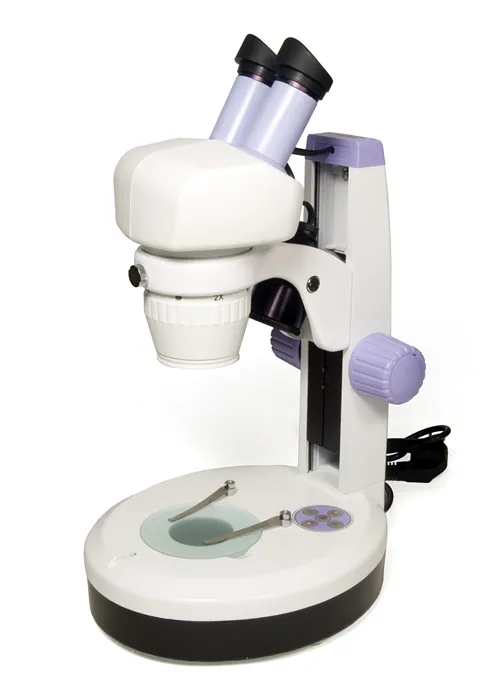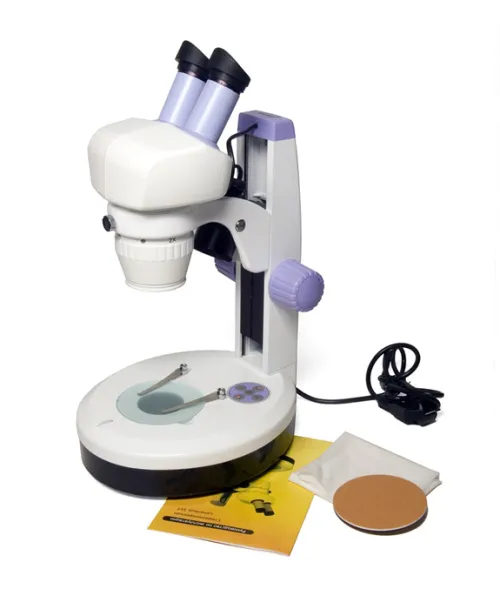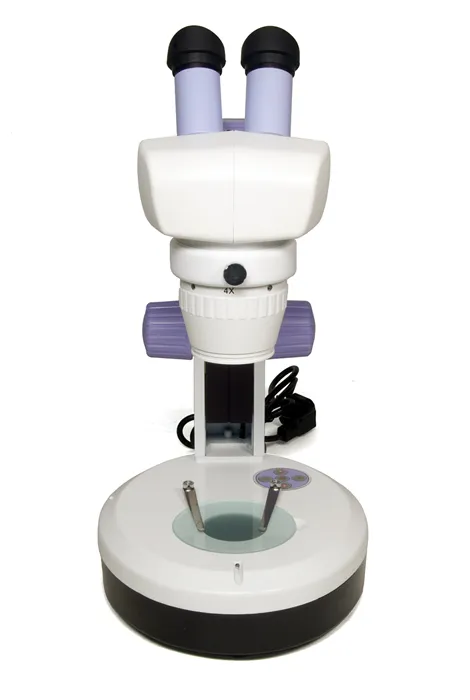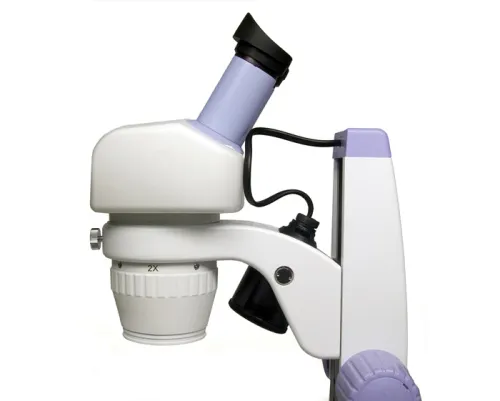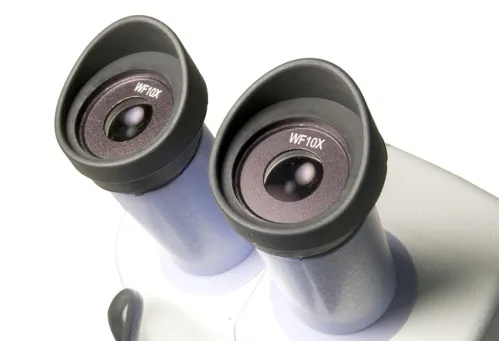Levenhuk 5ST Microscope
Stereo microscope. Binocular head. Magnification: 20–40x
| Product ID | 35321 |
| Brand | Levenhuk, Inc., USA |
| Warranty | lifetime |
| EAN | 5905555004532 |
| Package size (LxWxH) | 35x27x49 cm |
| Shipping Weight | 5.15 kg |
Levenhuk 5ST Microscope is a modern tool perfect for use both at home and in a professional laboratory. Due to the long working distance (160 mm, 6.3 in) of this lab microscope, you will be able to study everything you wish, including geological samples, jewelry, watches, textiles, agricultural products and more.
The optics in this modern measuring microscope render a high-quality image of observed objects, which allows for detailed studies of specimens and precise measurements of their dimensions.
With a WF10x eyepiece and objective lenses of 2x and 4x, this laboratory microscope yields magnification from 20x to 40x. The binocular head of the Levenhuk 5ST is inclined at 60 degrees, so that you may observe the specimens for a long time without getting tired.
The interpupillary distance of the binocular head may be adjusted within 54–76 mm (2.1–3 in) range for additional comfort during observations. The image is brought into focus by turning the coarse focus wheel on the microscope body. The upper and lower illumination sources provide the necessary illumination for your observations.
For much more effective observations, the stage plate may be rotated so that it faces either the black or the white side upwards, to increase the contrast of the observed specimen.
The kit includes:
- Levenhuk stereo microscope
- Binocular head
- 10x eyepiece – 2 pieces
- Two objective lenses: 2x, 4x
- Silicon case
- Matte glass stage
- Stage plate with black and white sides
- Rubber eyecups
- User manual and lifetime warranty
Caution: Please refer to the specifications table for the correct mains voltage and never attempt to plug a 110V device into 220V outlet and vice versa without using a converter. Remember that mains voltage in the U.S. and Canada is 110V and 220–240V in most European countries.
Some things you can see under a microscope:





Levenhuk 5ST Microscope is compatible with Levenhuk digital cameras (purchased separately). Levenhuk cameras are installed in the eyepiece tube instead of the eyepiece by using the 23.2–30.5mm adapter included in the kit with each camera.
| Product ID | 35321 |
| Brand | Levenhuk, Inc., USA |
| Warranty | lifetime |
| EAN | 5905555004532 |
| Package size (LxWxH) | 35x27x49 cm |
| Shipping Weight | 5.15 kg |
| Type | stereo/instrumental |
| Microscope head type | binocular |
| Optics material | optical glass |
| Head | fixed (non-rotatable) |
| Head inclination angle | 30 ° |
| Magnification, x | 20 — 40 |
| Eyepiece tube diameter, mm | 30.5 |
| Eyepieces | WF10x (2 pcs.) |
| Objectives | 2x–4x (zoom) |
| Working distance, mm | 160 |
| Interpupillary distance, mm | 54 — 76 |
| Stage, mm | Ø93 |
| Stage moving range, mm | fixed |
| Stage features | two plates: black and white double-sided and matte glass, with clips |
| Focus | coarse (100mm) |
| Body | metal |
| Illumination | LED |
| Brightness adjustment | ✓ |
| Power supply | 220V/50Hz |
| User level | beginners |
| Assembly and installation difficulty level | extremely simple |
| Application | for applied research |
| Illumination location | dual |
| Research method | bright field |
| Pouch/case/bag in set | dust cover |
We have gathered answers to the most frequently asked questions to help you sort things out
Find out why studying eyes under a microscope is entertaining; how insects’ and arachnids’ eyes differ and what the best way is to observe such an interesting specimen
Read this review to learn how to observe human hair, what different hair looks like under a microscope and what magnification is required for observations
Learn what a numerical aperture is and how to choose a suitable objective lens for your microscope here
An interesting review on how such microscopes work, form the 3D image and in what fields they are applied
Learn what a spider looks like under microscope, when the best time is to take photos of it, how to study it properly at magnification and more interesting facts about observing insects and arachnids
This review for beginner explorers of the micro world introduces you to the optical, illuminating and mechanical parts of a microscope and their functions
Short article about Paramecium caudatum - a microorganism that is interesting to observe through any microscope

